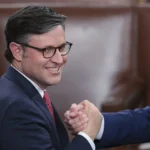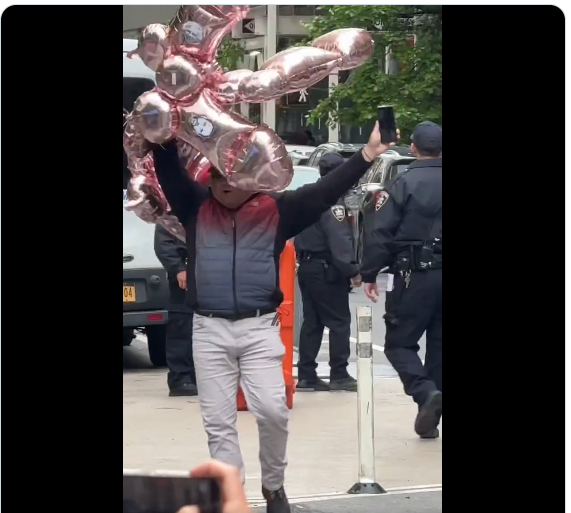The New York City deputy mayor for operations discusses her personal approach to the job and her appointment to the MTA board.

Operations doesn’t sound like a very sexy topic, but for Meera Joshi, it’s personal. As New York City’s deputy mayor for operations, Joshi takes the concept of sustaining that vague concept of infrastructure in a city of over 8 million people and puts a human face on it. Whether it’s sustaining roads, improving trash collection or ensuring the city’s plumbing isn’t backed up, Joshi said she knows that the best approach is to take into consideration how the average New Yorker feels about it.
City & State caught up with Joshi at City Hall last month, the day after she was appointed to serve on the board of the Metropolitan Transportation Authority. During a 30-minute interview, Joshi discussed why she approaches the job from such a personal perspective, what her days are like and her new role with the MTA.
This interview has been edited for length and clarity.
I like to start us off by asking, how do you start your morning?
I think it’s email, texts, news, including City & State, black coffee and a run.
As New York City deputy mayor for operations, you oversee a lot of agencies and their work. What’s your focus every day when you come to work?
So I like to think we oversee the metabolic system that is the city. All of the systems that keep us going every day. For us, it’s all the infrastructure agencies. So that’s 7,000 miles of roadway; 7,000 miles of pipes underground; billions of gallons of water that we drink every day, and about the same that we flush; 44 million pounds of garbage collected every day; and 30,000 acres of parkland. I could go on and on with these kinds of stats. But it’s a huge city that we run, and I mean that in the infrastructure way. Everything we do is supporting many.
Our job, obviously, (is maintaining everything in a) state of good repair. People talk when they’re complaining, but if there’s silence, we’re doing really well because we’re chugging along. You should not notice it. You should just be able to go about your day and everything works. The water comes out of the tap. The toilet flushes. The garbage gets picked up. That’s all good.
But we also have to evolve, because the city is changing, and the climate crisis is upon us. And so the way we do and build infrastructure is also evolving. That has to be part of our everyday work. Finally, the budget. We have to think about (the) cost of construction, and it goes up and up. I don’t think our forefathers dealt with the delta that we see now, between availability of funds, or the tax money that we bring in, and the actual costs of construction. That delta now is being filled with federal grant money and other sources, and we are really carefully looking at how we roll out capital projects so that we are as efficient as possible. We’re trying to get them under budget and on time. That really means getting more tools from Albany to do that.
I just saw the newly rebuilt steps leading up to City Hall. What can you tell me about that project and what it cost?
I don’t have an exact figure, but that comes from tax levy money, right? That’s our tax dollars and the build out is managed by the Department of Design and Construction. I will note there are vaults underneath the steps from the old City Hall subway station. So it’s not quite as simple as just replacing the steps. We have to consider the infrastructure underneath. Even though it’s not used so much today, it still exists. And have really important accessibility requirements that we have to make sure are even better than what was there before.
How do you approach the oversight of infrastructure in New York City?
I keep coming back to people. Each thing I approach I approach from the perspective of a person. I’m not an engineer, I’m not a city planner. I’m not an architect. I’m a lawyer, which means I can’t do math very well. I’d say I’m more on the creative side and I think that helps me a lot. We have a lot of engineers. They’re great. They’re out there. They’re fixing the problem. But if the way they’re fixing it doesn’t work for people, we’re just going to have to go back and redo it. So I’m constantly looking at the problems that we solve in city government from the perspective of the person who’s going to interact with them. Where I find joy is knowing that we’re solving problems in ways that are not just checking off a box. We’re solving them in a way that will actually improve or bring ease to people.
What does your typical day on the job look like?
We have an 8 a.m. call every morning with the mayor, and then a typical day is a mix of internal meetings, which either could be with my staff or with my sister deputy mayors. We work really well together. So a lot of it is interacting with them in their portfolios. We have sometimes obviously people who come into City Hall that meet with us. And then we have our outside engagements, which are either press events or going on site to see something that’s usually not working. It could be a sanitation garage roof that’s falling down. You need to be out there to see all of that, like understanding the problems at our wastewater treatment facilities thanks to wipes that won’t flush. It’s going to see physically how that clogs things up. For me, it’s really important because I can then translate that into a story, which is ultimately what you need to tell if you’re going to solve the problem.
Who knew that folks who don’t read the fine print on wipes.
They’re not really flushable. (Laughs.)
Yes, that wipes were clogging up an entire city!
It’s a glamorous job.
What other infrastructure surprises have you come across?
Every day, I’m fascinated with how big our system is and how well it works. Some of our pipes are from the 1800s, and … those are some of the best pipes. In the ’60s and ’70s, the quality went down, and that’s where most of our leaks come from.
How has infrastructure become a priority for the city post-COVID-19? The whole idea now that we’re in a post-pandemic world was to somehow normalize ourselves, but this is a new normal, right? And how is that helping the city as far as economic development?
Being the administration coming out of COVID-19, we had an incredible challenge ahead of us. First, there was the human toll that was unspeakably tragic. Second was the huge financial toll that had so many other effects on communities. But when we think about financial stability, it really comes from the foundation. What is the quality of life? How secure is the foundation? How comfortable and safe do people feel in New York? Do they want to stay here? Do they want to come here? There’s so much that’s wonderful about New York, but you still have to start with this basic feeling of safety and a secure foundation. And so our job is to ensure that people aren’t actually thinking about it that much. They’re just experiencing and then going off with their dreams. But that is a huge challenge coming out of COVID-19 because you have to not only deal with entrenched problems and new situations but also the climate crisis, which didn’t go away with a vaccine. It’s still with us.
On the entrenched problems, we have shrouded our streets with scaffolding. Administration after administration has thought about how can you change this. There’s enforcement that we can do as a city. The Buildings Department has ramped up a lot of its enforcement. They used to go after people who had their scaffolding up for five or more years. Now it’s three or more years. They’re starting criminal actions against bad actors. We had one that had scaffolding up for 21 years. A lifetime. We are also pursuing what the scaffolding of tomorrow can look like. This is (a request for proposals) seeking two engineering design firms to come up with a selection of new designs, knowing exactly what we want. We want to know how we can make scaffolding as street sidewalk-friendly as possible. It can be from the very, very cheap to the very, very expensive. Once those are developed, we can go to the City Council and say adopt these, make them part of the buildings code. I think that it’s a heavy lift, but it’s actually the only way we get away from the fact that we will always have some scaffolding. How do we ensure that the scaffolding we have isn’t quite as dreary. Today, it’s considered the cost of doing business to leave the scaffolding up. It’s much cheaper often to leave the scaffolding up than to do the facade repairs.
So we should really be thinking about how we’re treating buildings, instead of putting them all on the same cycle.
But doesn’t the city also have a lot of scaffolding around its buildings?
Oh, yes.
The Medical Examiner’s Office is among the buildings shrouded in scaffolding for the longest, almost 15 years.
My job is to get all those city agencies together and work with the oldest scaffolding first and determine what the financial impediments are, because that’s generally what they are. We have a huge capital budget, but obviously it doesn’t cover everything every time. But this administration is focusing on those long-standing scaffoldings on city buildings and trying to match them with funds and accelerate the work. But we are certainly putting the same scrutiny on those that we’re putting on the rest of the city.
You were confirmed to serve on the Metropolitan Transportation Authority board just yesterday. What do you see as the greatest priorities for the MTA?
Getting back to the people. Transportation can be an equalizer. Accessible transportation is an even better equalizer. Many of our socio-economic disparities stem from lack of transportation or lack of reliable transportation. Our public transportation system needs to do all of that for everybody. With congestion pricing coming in, that’s even more important. And so my priorities will be not the headline, the sparkly stuff, but what’s the everyday stuff that makes people’s experience in public transportation better.
Do you have any thoughts on the recent increase in violence?
It’s between the numbers and the perception, right? And we’ve seen the headlines, which are horrible. But these are events that are almost like made for headlines, right? People in the press grab on to them. But because those headlines are out there, the perception is real for the public and people might start thinking twice, especially women.That’s really not a situation we want to be in. One of the things that I’m really proud of is the work Deputy Mayor Anne Williams-Isom, the police and MTA have done in pairing mental health and law enforcement. Mental health providers want to do their work, but they also want to feel secure as they do their work. So ensuring that there is some law enforcement presence as they engage, and making sure that that allows them also to have more freedom to go around the subway system, they’ve had a lot of success. So doing this, we’ve placed people from the subway system into housing. The public needs to feel reassured of safety. Even the announcements that there’s a police officer on the platform means a lot to people. I certainly hope the perceptions changed.









